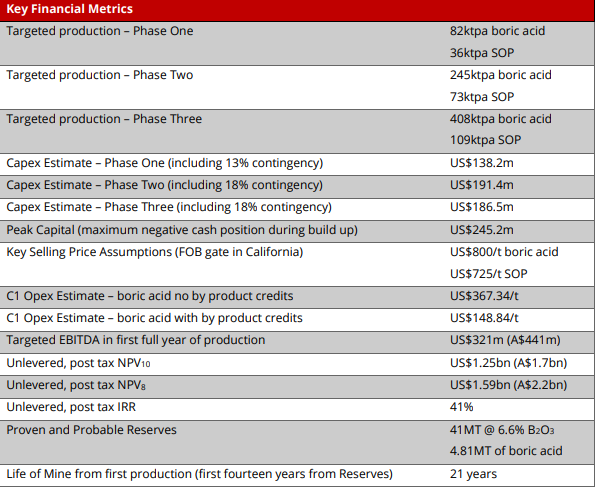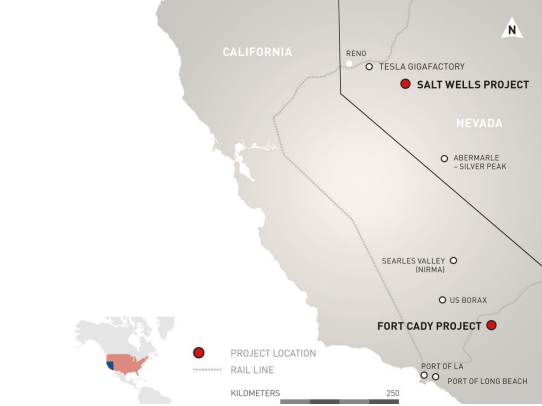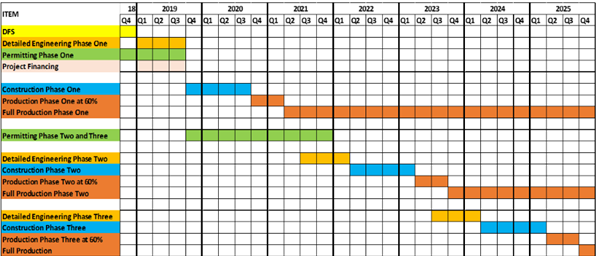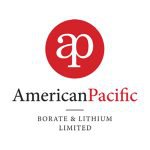American Pacific Borate unveils $1.7B project with upbeat DFS
Hey! Looks like you have stumbled on the section of our website where we have archived articles from our old business model.
In 2019 the original founding team returned to run Next Investors, we changed our business model to only write about stocks we carefully research and are invested in for the long term.
The below articles were written under our previous business model. We have kept these articles online here for your reference.
Our new mission is to build a high performing ASX micro cap investment portfolio and share our research, analysis and investment strategy with our readers.
Click Here to View Latest Articles
In December, ASX junior American Pacific Borate and Lithium (ASX:ABR) released an extremely positive definitive feasibility study (DFS) in relation to its Fort Cady Borate Project in California.
This development saw the company’s share price increase more than 50% from the previous day’s close of 14 cents to a high of 22.5 cents.
While this level hasn’t been sustained, this can arguably be attributed to the broad-based sell-off that has occurred in global equities markets.
At this stage, though, it is important to focus on the financial metrics of the DFS rather than share price gyrations, given that the fundamentals (as outlined below) point to an extremely lucrative project.

Pricing assumptions and other data appear conservative with boric acid currently fetching around US$900 per tonne compared with the US$800 per tonne used in the DFS.
This implies strong margins relative to the DFS estimated operating costs of approximately US$370 per tonne prior to taking into account by-product credits, with the latter significantly reducing costs to around US$150 per tonne.
Net present value of $1.7B
The Fort Cady Project demonstrated an outstanding boric acid and sulphide of potash (SOP) project driven by low upfront capex, high margins and low technical risk.
American Pacific Borate is targeting a substantial EBITDA of $441 million in its first full year of production, which makes Fort Cady a significant mining project in a low risk, supportive jurisdiction.

Other key metrics include a post-tax net present value of $1.7 billion based on a discount rate of 10%.
The DFS points to a mine life of 21 years with a post-tax internal rate of return of 41%.
The capital expenditure required to deliver phase 1 of the project is US$138.2 million, and management expects to start construction in the December quarter of 2019.
Important upcoming milestones include progressing financing discussions, obtaining permits and the commencement of detailed engineering, while the company will also be working towards decoupling SOP operations from the broader project.
Management is looking to increase its financing options while lowering upfront capital expenditure and generating earlier revenues.
The following schedule sets out the company’s goals, while also providing investors with an indication of the timing of potential share price catalysts.
Phase 1 production, which is scheduled for the second half of 2020, will be an important milestone.

Valuable data from previous exploration
As a backdrop, over US$50 million has been spent on the Fort Cady Project, including licence acquisition, drilling and resource estimation (non-JORC), well testing, metallurgical testing, feasibility studies and pilot plant infrastructure.
In addition, the project has previously obtained all operating and environmental permits required for commercial solution mining operations.
Duval Corporation evaluated the Fort Cady deposit in the late 1970s and early 1980s, completing over 30 diamond drill holes upon which the maiden non-JORC Resource Estimate was defined.
American Pacific Borate upgraded the resource in the first half of 2018.
The Mineral Resource Estimate increased by 27.4 Mt from 93.0 Mt to 120.4 Mt and by 0.2% B2O3from 6.3% to 6.5%. This represents a 30% increase in tonnes and a 3% increase in B2O3 grade.
The contained boric acid increased to 13.9 million tonnes.
Harking back to previous exploration initiatives, an additional 17 production wells were completed following the 1970s/1980s drilling campaign, and these were used for injection testing and pilot-scale operations.
Historical records from Mountain State Minerals that produced boric acid on site in 1986 and 1987 show the operations achieved an average boric acid head grade of 3.7% without using heating injection fluids to boost recoveries or utilising waste water containing residual boric acid.
This historical information is important as Mountain State Minerals was using the same injection fluids that American Pacific Borate is proposing to use.
Approximately 450 tonnes of boric acid was produced via solution mining of the colemanite ore body.
Given the promising results of the pilot-scale tests, concentrated permitting efforts for commercial-scale operations began in early 1990.
Final approval for commercial-scale solution mining and processing was obtained in 1994.
Extensive feasibility studies, detailed engineering and test works were subsequently undertaken in the late 1990s and early 2000s.
This included a second phase of pilot plant operations between 1996 and 2001, during which time approximately 1,800 tonnes of a synthetic colemanite product (marketed as CadyCal 100) was produced.
Commercial-scale operations were not commissioned due to low product prices and other priorities of the controlling entity.
American Pacific Borate executed a share purchase agreement with the project vendors (Atlas Precious Metals Inc.) in May 2017 to purchase 100% of what is now shaping up as a highly viable producing asset.
Buoyant outlook for borate
Management recently highlighted global supply and demand data from multinational borate producers, as well as commentary from analysts which indicates that the mineral remains an important industrial ingredient for modern society with demand expected to continue to grow.
There are very few substitutes for borates, especially in high-end applications and the resilient agricultural industry.
These key markets in particular are expected to grow as global population increases and a new middle-class emerges in previously impoverished countries with large populations.
The dynamics are also helped by a significant divergence of demand for borates driven by the construction and glass industries.
It is expected that China will continue to be the key market for growth, but additional demand is expected within the US, India and the European Union.
Borates tend to be a high-margin industry, but key factors for success are B2O3 grade, the ability to mine and mine proximity to infrastructure - areas where American Pacific Borate has a distinct advantage.
In the absence of boron resources across Asian countries and taking into account the constant and growing demand for its glass and ceramics, borate producers should continue to benefit from increasing demand.
General Information Only
This material has been prepared by StocksDigital. StocksDigital is an authorised representative (CAR 000433913) of 62 Consulting Pty Limited (ABN 88 664 809 303) (AFSL 548573).
This material is general advice only and is not an offer for the purchase or sale of any financial product or service. The material is not intended to provide you with personal financial or tax advice and does not take into account your personal objectives, financial situation or needs. Although we believe that the material is correct, no warranty of accuracy, reliability or completeness is given, except for liability under statute which cannot be excluded. Please note that past performance may not be indicative of future performance and that no guarantee of performance, the return of capital or a particular rate of return is given by 62C, StocksDigital, any of their related body corporates or any other person. To the maximum extent possible, 62C, StocksDigital, their related body corporates or any other person do not accept any liability for any statement in this material.
Conflicts of Interest Notice
S3 and its associated entities may hold investments in companies featured in its articles, including through being paid in the securities of the companies we provide commentary on. We disclose the securities held in relation to a particular company that we provide commentary on. Refer to our Disclosure Policy for information on our self-imposed trading blackouts, hold conditions and de-risking (sell conditions) which seek to mitigate against any potential conflicts of interest.
Publication Notice and Disclaimer
The information contained in this article is current as at the publication date. At the time of publishing, the information contained in this article is based on sources which are available in the public domain that we consider to be reliable, and our own analysis of those sources. The views of the author may not reflect the views of the AFSL holder. Any decision by you to purchase securities in the companies featured in this article should be done so after you have sought your own independent professional advice regarding this information and made your own inquiries as to the validity of any information in this article.
Any forward-looking statements contained in this article are not guarantees or predictions of future performance, and involve known and unknown risks, uncertainties and other factors, many of which are beyond our control, and which may cause actual results or performance of companies featured to differ materially from those expressed in the statements contained in this article. S3 cannot and does not give any assurance that the results or performance expressed or implied by any forward-looking statements contained in this article will actually occur and readers are cautioned not to put undue reliance on forward-looking statements.
This article may include references to our past investing performance. Past performance is not a reliable indicator of our future investing performance.

